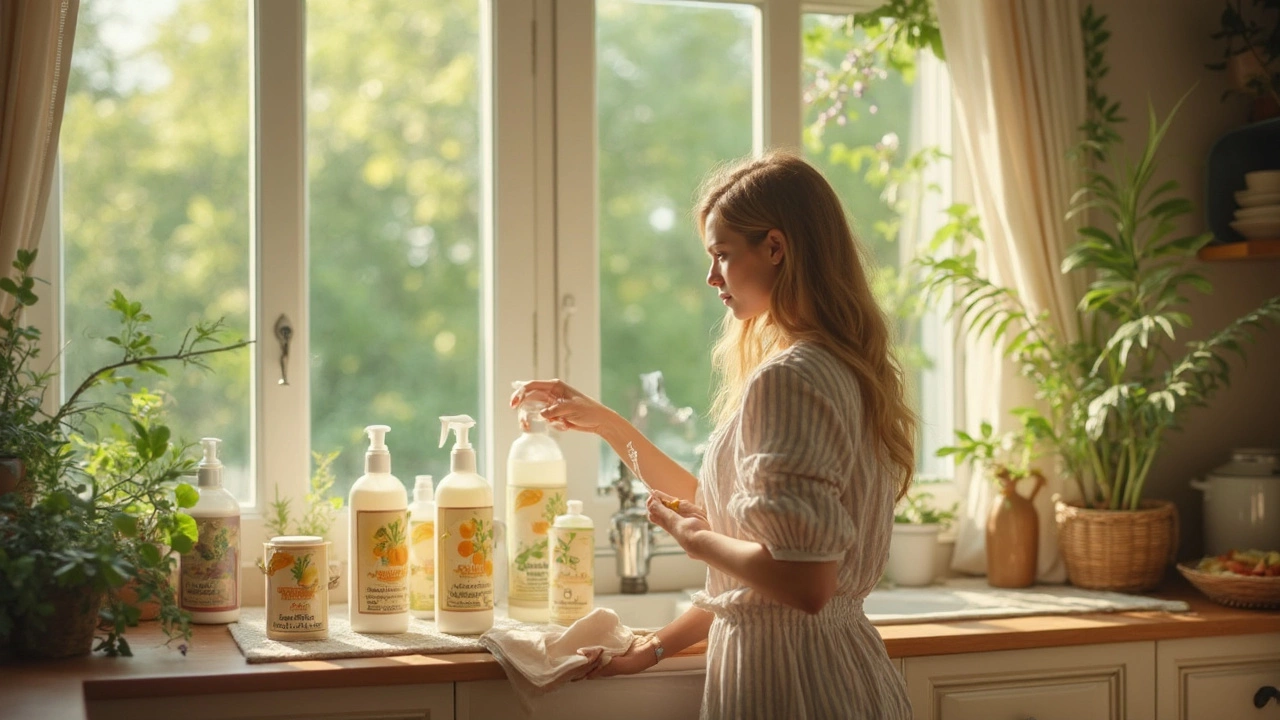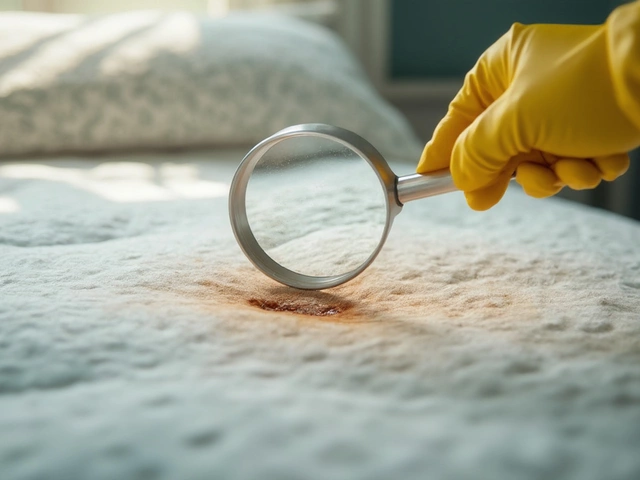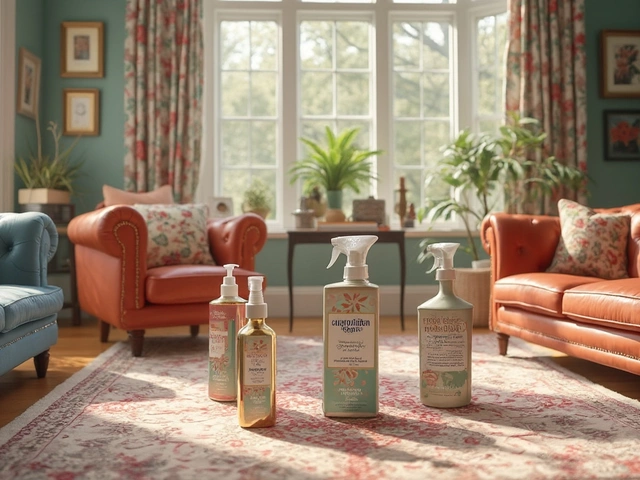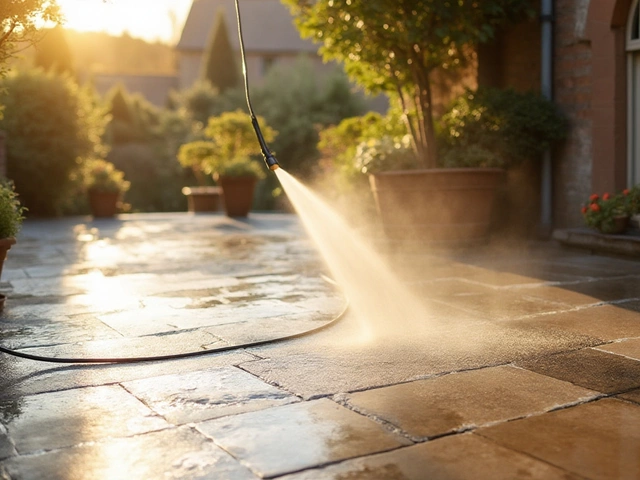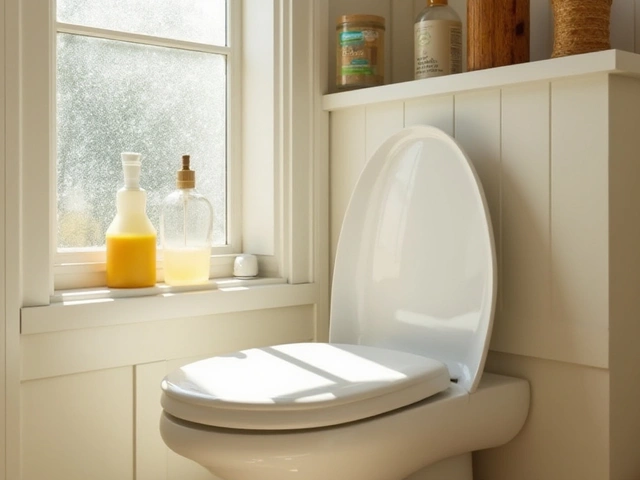Ever wonder what makes a product truly eco-friendly? It's not just about slapping a green label on the bottle. Eco-friendly chemicals are all about using ingredients that are kinder to our planet, and safer for our homes and us. But what's the magic behind them, and why should you care?
Let's break it down. Unlike traditional cleaners loaded with harsh chemicals, eco-friendly options use plant-based ingredients. We're talking about things like vinegar, baking soda, and citric acid. They're tough on dirt but gentle on the environment.
Switching to these alternatives isn't just a feel-good move; it's a practical choice. You'll reduce the carbon footprint left by manufacturing processes and make a healthier space for your family. Plus, they often come in recyclable packaging, cutting down on waste.
Choosing eco-friendly doesn't mean sacrificing effectiveness. These natural wonders can tackle grease, grime, and bacteria just as well, sometimes even better, than their chemical-laden counterparts. Next time you're shopping, flip that bottle around. Check out the ingredient list. If you can't pronounce half of them, it might be time to consider a cleaner option.
- Introduction to Eco-Friendly Chemicals
- Common Ingredients and Their Benefits
- Why Choose Eco-Friendly Over Traditional Products?
- Impact on Health and Environment
- Tips for Choosing the Right Products
- DIY Eco-Friendly Cleaning Solutions
Introduction to Eco-Friendly Chemicals
Let's face it, cleaning with eco-friendly chemicals is no longer just a trend—it's becoming the norm for those who care about their health and the environment. But what exactly are these magical ingredients that make products both effective and environmentally friendly?
Eco-friendly chemicals are all about minimizing harm. They replace harmful substances with natural, biodegradable alternatives. Instead of using bleach or ammonia, these cleaners rely on plant-based compounds.
What's Inside Eco-Friendly Cleaners?
Most eco-friendly products contain familiar ingredients like vinegar, baking soda, and essential oils. These aren't just things you use in your kitchen; they're powerhouse cleaners. Vinegar, for instance, can cut through grease, while baking soda is a fantastic gentle scrub. Essential oils not only add a pleasant scent but can have antibacterial properties.
Why Go Green?
When you use eco-friendly alternatives, you're reducing pollution and exposure to hazardous chemicals. Traditional cleaning chemicals can contribute to air and water pollution. In contrast, their eco-friendly counterparts diminish this impact, making them a better option for our planet.
Switching to eco-friendly cleaning products can also be gentler on your skin and respiratory system. Did you know harsh cleaning chemicals are one of the top triggers for household allergies? By making the switch, you're cutting down on potential irritants at home.
The Green Choice
You don't have to make drastic changes to start living a greener lifestyle. Begin by checking the labels on your current products. Look for certifications like USDA Organic or EPA Safer Choice. These labels can help ensure the products you're choosing align with eco-friendly principles.
Curious about some numbers? A shift to eco-friendly cleaning in your home can significantly cut down chemical usage. Here's a simple table showing potential reductions:
| Traditional Product | Eco-Friendly Reduction |
|---|---|
| Bleach | 100% swap for vinegar |
| All-Purpose Cleaner | Up to 60% fewer chemicals |
| Glass Cleaner | 80% fewer toxins |
By paying attention to what you use, you're taking a small but crucial step toward a more sustainable lifestyle. Isn't it time to try something that benefits both your home and the planet?
Common Ingredients and Their Benefits
When you're looking at eco-friendly cleaning products, you'll notice they often use a shorter, more familiar list of ingredients compared to their chemical-heavy cousins. Let's explore what these common ingredients are and why they're great for both your home and the environment.
Vinegar
Vinegar is like the Swiss army knife of green cleaning. It's made from acetic acid, which gives it that distinctive smell, but more importantly, it excels at cutting through grease, breaking down bacteria, and removing stains. Plus, it's super affordable and widely available. Use it for cleaning windows, countertops, and even your microwave.
Baking Soda
This kitchen staple isn't just for baking. Baking soda is a mild abrasive, which makes it perfect for scrubbing surfaces and tackling tough spots. It's also great at neutralizing odors, so sprinkle some in your fridge to keep things fresh. Mix it with a bit of water, and you've got a paste that can take on grout stains in your bathroom.
Citric Acid
Found naturally in fruits like lemons and oranges, citric acid is a powerhouse for descale jobs. It removes limescale, hard water stains, and soap scum. It's also antibacterial, which is why you'll often see it in dishwashing detergents and bathroom cleaners. It leaves a pleasant, fresh scent, too.
Essential Oils
Besides adding a lovely aroma, oils like tea tree, lavender, and eucalyptus boast antifungal and antibacterial properties. They're often used in small amounts to enhance cleaning power and leave a delightful scent behind without relying on synthetic fragrances.
Cornstarch
People often overlook cornstarch in cleaning, but it's great for polishing furniture and cleaning windows. It absorbs grease and acts as a natural thickener for homemade cleaners.
Eco-friendly ingredients not only provide effective cleaning solutions but also reduce the risk of toxic exposure to your family and pets. So, when you're ready to switch, these staples are a great place to start.
Why Choose Eco-Friendly Over Traditional Products?
When it comes to cleaning, many of us automatically reach for that trusty bottle under the sink without a second thought. But traditional cleaning products often contain chemicals that are harmful to both our health and the environment. Switching to eco-friendly alternatives offers multiple benefits that aren't just good for the Earth but also for your family's health.
Protecting Your Health
Many conventional cleaners contain volatile organic compounds (VOCs), which can lead to respiratory issues and skin irritation. In contrast, eco-friendly chemicals avoid these risks by using gentler, plant-derived ingredients. By choosing green options, you can protect your family from the potential health hazards linked with long-term exposure to harmful chemicals.
Environmentally Responsible
Every time you wash a chemical-filled cleaner down the drain, it eventually ends up in our waterways, affecting marine and plant life. Eco-friendly cleaning products break down quickly, minimizing pollution and helping protect ecosystems. This is a simple change we can all make to contribute positively to the environment.
Cost-Effectiveness
Think eco-friendly products are too pricey? Not always. Many green cleaning solutions, like vinegar or baking soda, are readily available and cost a fraction compared to branded chemical cleaners. Plus, they often work just as well, if not better.
Supporting Sustainability
Eco-friendly products typically use sustainable packaging. From reusable bottles to biodegradable materials, these choices also help in reducing the amount of waste that ends up in landfills. It's a win-win situation for future generations who'll thank you for preserving the planet.
Making the switch isn't hard. Start by checking out labels, looking for certifications like USDA Organic or Leaping Bunny for cruelty-free assurance. Small changes can have a significant impact. What’s your next step? Maybe it’s time to reconsider what’s in your cleaning caddy.
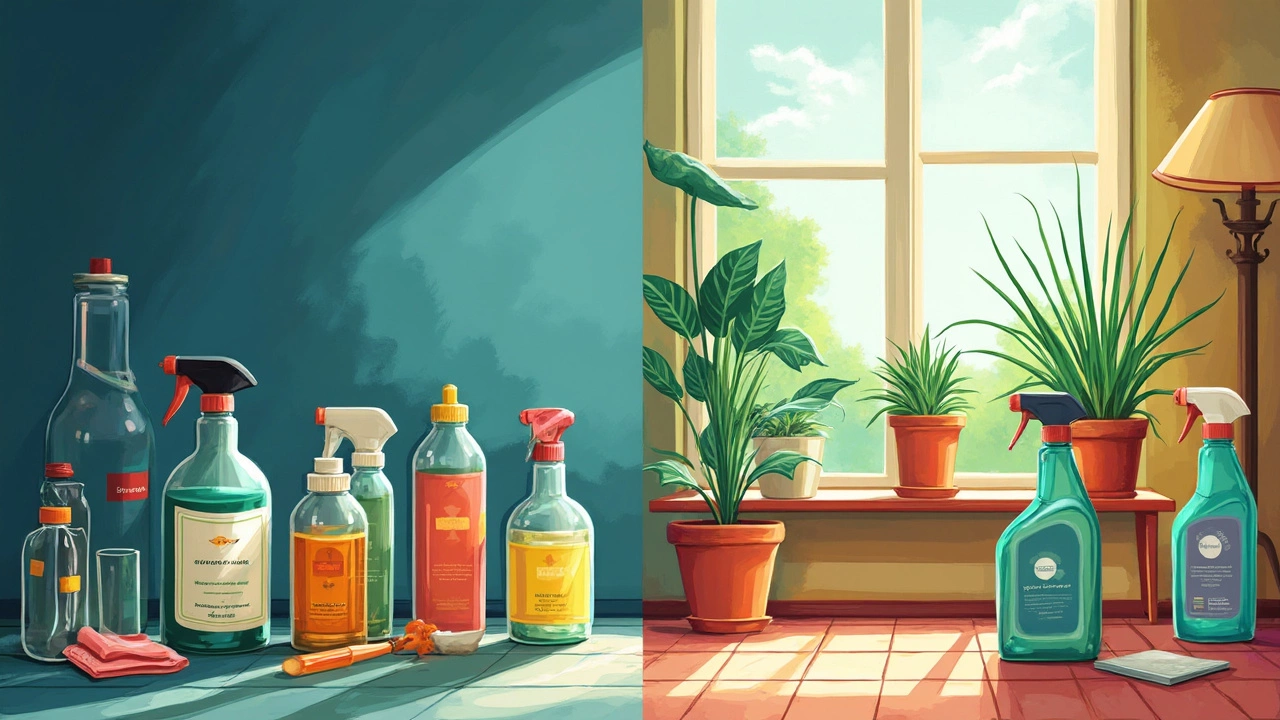
Impact on Health and Environment
So, you're thinking about making the switch to eco-friendly chemicals. Great choice! Not only are you doing your bit for the planet, but you're also making things safer for yourself and your loved ones. How exactly do these products stack up?
Protecting Your Health
Conventional cleaning products often contain a cocktail of volatile organic compounds (VOCs). These can cause headaches, dizziness, and even long-term respiratory issues. On the flip side, eco-friendly options focus on natural ingredients, like essential oils, which can actually improve indoor air quality.
There's also less exposure to allergens and toxins. Many natural products are fragrance-free or use mild essential oils, making them suitable for those sensitive to synthetic perfumes and colors.
Environmental Benefits
Traditional chemicals can be harsh on the environment. They often end up in waterways, impacting aquatic life and the broader ecosystem. In contrast, eco-friendly cleaners are biodegradable, which means they break down easily without leaving harmful residues.
These products are usually produced using renewable resources, cutting energy consumption and reducing pollution associated with manufacturing. Plus, supporting brands that prioritize sustainable practices helps push the industry towards a brighter, greener future.
Stats That Matter
Curious about the numbers? Studies show that switching to green cleaning can reduce toxic chemical usage by 70%. Plus, it's estimated that households using eco-friendly products cut their carbon footprint significantly, as seen in the table below:
| Factor | Reduction |
|---|---|
| Carbon Footprint | Up to 50% |
| VOCs Emission | 60% less |
Choosing eco-friendly means making a difference—both within your home and beyond. When you opt for these products, you're not only prioritizing health but also setting a positive example for others to follow. It's a win-win for everyone.
Tips for Choosing the Right Products
Looking to switch to eco-friendly products but don't know where to start? It can be tricky to navigate the sea of options out there, but don't worry, we've got you covered. Here are some practical tips to help you make the best choice!
1. Check the Labels
First things first, always read the labels. A genuine eco-friendly product will be transparent about its ingredients. Look for natural, plant-based components like citric acid and essential oils. If you're seeing chemical names longer than your grocery list, it's time to reconsider.
2. Certifications Matter
Look for certifications like EPA's Safer Choice or EcoLogo. These stamps of approval mean the product has been tested and meets strict environmental standards. They take the guesswork out of choosing truly green products.
3. Avoid Certain Ingredients
Be on the lookout for harmful stuff. Avoid products containing phthalates, parabens, or any kind of synthetic fragrance. These can cause health issues and aren't great for the environment.
4. Consider Packaging
Packaging is a biggie. Go for those using recycled materials or coming in biodegradable packaging. It reduces waste and is kinder to our planet.
5. Word of Mouth
Ever chatted with friends or family about what they use? Word of mouth is powerful. Sometimes the best recommendations come from those we know who trust a specific brand or product.
6. Try Before You Buy
If possible, buy sample sizes first to see if the chemicals fit your needs. Not all products will work the same for everyone. Testing it out can save you money and disappointment.
Switching to eco-friendly alternatives is a step in the right direction not just for your space, but for the world, too. A cleaner home for a cleaner planet—sounds like a win-win!
DIY Eco-Friendly Cleaning Solutions
Feeling ambitious and ready to ditch those store-bought cleaners? Making your own eco-friendly cleaning solutions is way easier than you might think. Plus, you'll save some cash and know exactly what's going into them. Let's get our hands dirty, but in a clean way!
All-Purpose Cleaner
This trusty cleaner can replace almost everything under your kitchen sink. Just mix the following in a spray bottle:
- 1 cup of vinegar
- 1 cup of water
- 2 tablespoons of baking soda
- 20 drops of essential oil (like tea tree or lavender for their natural antibacterial properties)
Shake it up and you're ready to tackle countertops, bathroom surfaces, and even greasy stovetops.
Glass Cleaner
Say goodbye to streaky windows. For a sparkling finish, try this simple solution:
- 1 cup of water
- 1 cup of rubbing alcohol
- 1 tablespoon of vinegar
Spray on glass surfaces and wipe with a microfiber cloth for the best results. It's way sweeter than dealing with those harsh chemical fumes.
Toilet Bowl Cleaner
Cleaning the toilet bowl doesn't need a hazmat suit. This eco-friendly mix will do the trick:
- 1/2 cup of baking soda
- 1/4 cup of vinegar
- 10 drops of any essential oil (like eucalyptus for a fresh scent)
Pour the baking soda and essential oil in the bowl, then add the vinegar. Let it fizz for a few minutes before scrubbing with a toilet brush. Easy and effective!
Laundry Detergent
Who knew laundry could be greener? Mix these ingredients for a natural laundry detergent:
- 1 bar of grated castile soap
- 1 cup of washing soda
- 1 cup of borax
Use 2 tablespoons per load. Bonus: no more mysterious chemicals in your clothes.
Switching to these eco-friendly DIY solutions not only helps the environment but also gives you a sense of accomplishment. You're making a difference, one clean surface at a time!
